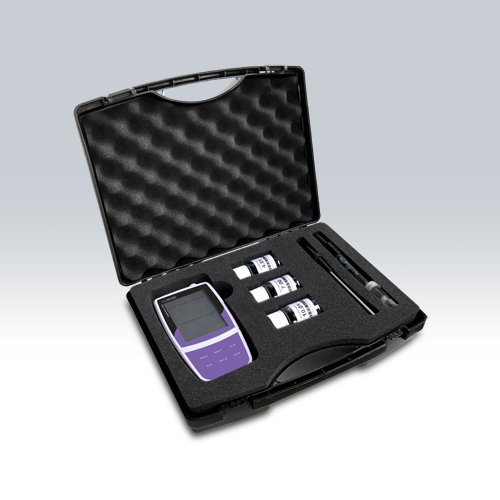Ions are essential nutrients for the development and growth of plants. These are classified into macronutrients and micronutrients, according to the concentrations required by the plants. The imbalance of nutrients promotes the appearance of diseases and can cause the death of plants. For example, potassium is important for regulating the osmotic potential of plant cells; deficiency of this element decreases the ability of the plant to flourish and bear fruit.
The design and application of a fertilization plan for crops is oriented to provide an adequate balance of nutrients for plants. It is often recommended that before implementing a fertilization plan, soil analyzes are performed to know the status of the soil and that from the results of the analysis, recommendations are derived to address nutrient imbalances.
Although soil analysis is an important management tool for the design of an adequate fertilization program, in most cases, these analyzes are performed when nutrient deficiency problems are already visible in plants. On the other hand, an inadequate fertilization strategy can reduce profitability and damage the environment due to groundwater contamination, eutrophication and change in soil microbiota. In order to optimize crop fertilization, it is necessary to understand nutrient requirements and have real-time diagnostic tools to determine the nutritional status of plants.
Plant sap analysis provides information about the crop in a more dynamic way, compared to soil or tissue analysis alone. This test, allows to know the levels of minerals in the plant and can show deficiencies and excesses, before they exert a harmful effect.
Knowing the nutritional status and composition of ions in plants provides agricultural researchers and farmers with valuable information to optimize crop yields and quality. Sap analysis can determine the need for a nutrient and then apply the amount needed before the deficiency manifests as a disease or weakness.
How is the analysis of plant sap performed?
The sap analysis is performed with ion meters. This test allows the analysis of the xylem and phloem of the plant, as well as other solutions such as cytosolic and vacuolar contents.
The measurement of the ionic form of a nutrient differs from the conventional tissue nutrient analysis, because the latter measures the concentration of a given nutrient, in its biological form. The use of the ion meter allows us to measure the ionic forms of nutrients.
Benefits of plant sap analysis
- It allows to know the concentrations of nutrients that are available for the plant, at the time of sampling. This allows nutrient absorption to be monitored and deficiencies to be detected before they become visible.
- It facilitates the implementation of precise adjustments in nutrient amendments, aimed at correcting imbalances and deficiencies, during the different stages of crop growth.
Sodium ion meters for plant sap analysis
The sodium ion meter measures the amount of sodium in the plant, with high accuracy and at any stage of the growing cycle. Sodium is abundant in soil, water, and air. It also occurs in soil colloids as an exchangeable cation and has an important effect on soil health.
Increasing salinity of irrigation sources and accumulation of sodium through the use of chemical fertilizers with a high sodium content can cause problems for plants. It is known that cations exhibit high antagonism in soil. The deficiency of one cation is often created by the overabundance of another. The same relationship occurs within the plant. For example, calcium deficiency is probably due to excess potassium or magnesium in the soil, not calcium failure. The achievement of a healthy cationic balance in the plant is essential.
The sodium meter can identify any potential problems early on. For example, if the percentages of sodium saturation in the soil exceed the saturation of potassium, the plant will begin to absorb sodium instead of potassium. The ion meter will allow early diagnosis of this problem and facilitate rapid correction.
Kalstein Sodium Ion Meters
At Kalstein we offer a wide variety of sodium ion meters, from the YR series. You can choose the one that best suits your needs. Kalstein sodium ion meters, which offer the possibility to select the concentration units, e.g. ppm, mg/L and MOL/L, simplify the measurement process by performing direct ion concentration reading. In addition, they are designed with a backlit LCD screen and offer a set-up menu that allows the number of calibration points, stability criteria, temperature, unit, date and time, among others, to be set. In addition, it is suitable for use in both field and laboratory applications and can be used for soil analysis. For more information on Kalstein sodium ion meters, visit HERE




